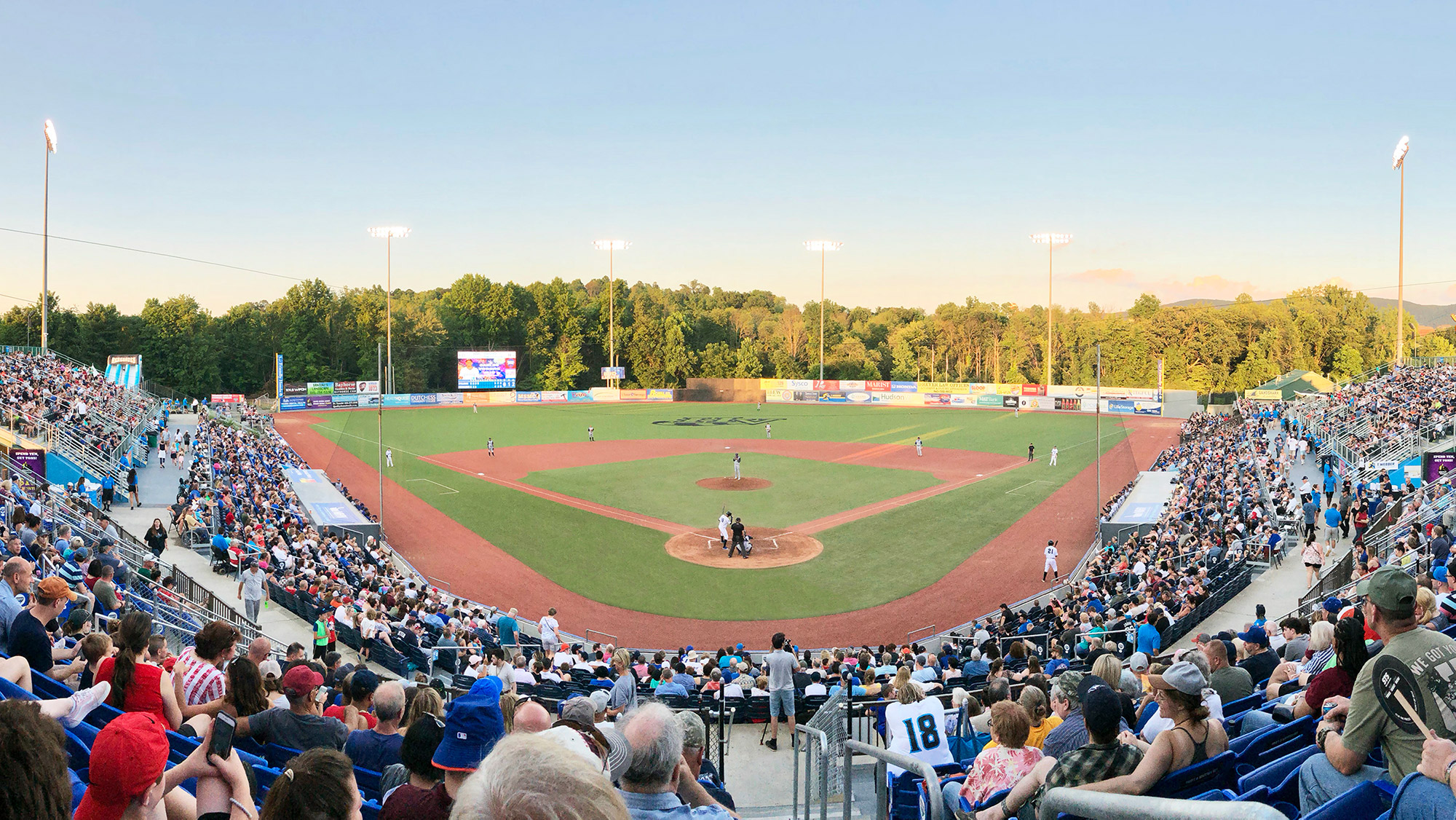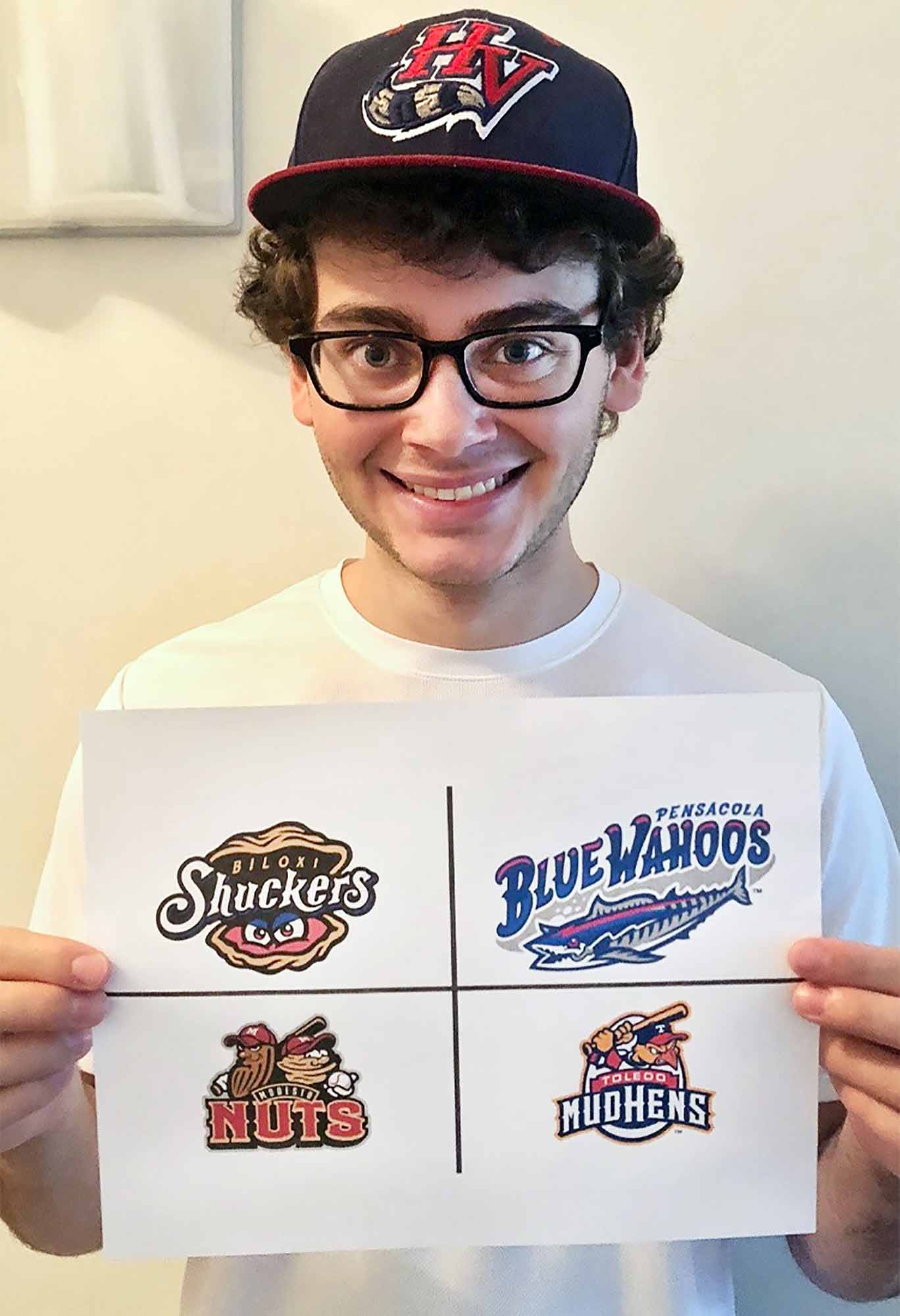Ford Scholar—and Baseball Fanatic—Examines Minor Leagues
Ford Scholar—and Baseball Fanatic—Examines Minor Leagues
Alex Eisert ’22 immersed himself this summer in the world of Shuckers and Mud Hens, of Renegades and Blue Wahoos, and RailRiders and IronPigs. A psychology major from Manhattan, Eisert earned a stipend this summer for his research on the intricate workings of Minor League Baseball as a Ford Scholar working under the direction of Assistant Professor of Economics Qi Ge. But honestly, Eisert says, he probably would have done it for free. “I am,” he confessed, “a baseball nut.”

Eisert has “managed” numerous fantasy baseball teams and has been writing a blog for FanGraphs, a website devoted to baseball statistics, for several years. He’s been a fanatic for as long as he can remember. “My Dad was a big baseball fan, and I played a lot as a kid,” he said. “Then when I was in eighth grade, I read Moneyball (a book that promotes the art of statistical analysis in building a winning team) and became fascinated with that aspect of the game.”
Eisert, who writes about baseball for the Miscellany News, said he was eager to apply for the Ford Scholars program when he saw the topic Ge had proposed for the summer: unraveling the often-convoluted relationships between minor league and major league teams. “When I saw this opportunity,” he said, “I said to myself, ‘This is perfect.’”

Ge, who teaches a course on sports economics, said the project focused on the various levels of affiliation between major league and minor league teams. Those relationships became more formalized after World War II, Ge said, but they have always taken several different forms. Since the 1940s, many major league teams have fully owned some minor league teams. But in other cases, the teams have a working relationship in which some of the minor league player contracts are owned by major league teams. In other so-called “independent” leagues, the players have no direct financial relationship with any major league team.
“In our study, we want to look at how fully integrated minor league teams are with major league teams,” Ge explained, “and then assess the impact of these relationships on the teams’ success on the field as players were called up to the majors.”
Ge said Eisert had been an ideal partner for the project because of his extensive background in programing and his knowledge and love of baseball. “Alex was the perfect fit,” he said.
Eisert said he was still gathering and assessing data on the financial relationships between the minor league and major league teams when the Ford Scholars program formally ended in late July. But he said he and Ge planned to continue their study in the fall and hoped to publish a paper on their findings. “I’ve written a pretty comprehensive history of the minor league system, and that will be part of the paper,” he said. “We are far from done, but I love this topic and look forward to continuing to work on it.”
And as for those whimsical team names, Eisert said he enjoyed compiling them as he conducted his research. While some have kept the same name for decades, others have changed quite a few times. “It turns out that since 1947, there have been 341 unique team names, but there are only 117 unique franchises,” Eisert said. “This means that each minor league team had an average of three different names.”
Spoken like a true baseball nut.